12 Design Collaboration Tools for Fast and Organized Work
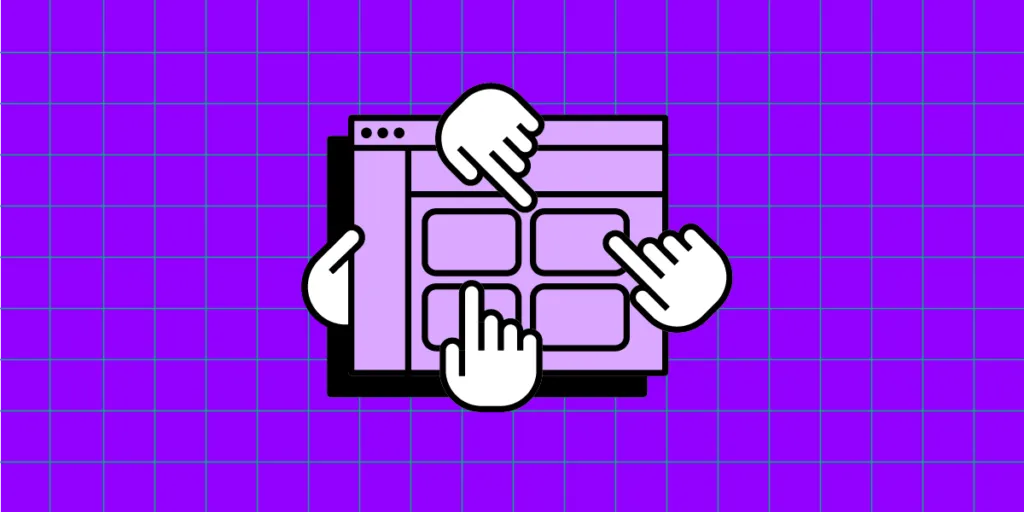
The design process is a collaborative effort where designers seek input and ideas from other design teams, product teams, engineers, and other stakeholders. Design collaboration tools help bring these people and ideas into a centralized workflow to increase productivity and streamline projects.
UXPin Merge is a design technology that’s able to sync design and development, so designers and engineers share a single source of truth and work more collaboratively. Take your design collaboration to a level that allows you to work at scale ans bridge communication gap between designers and devs. Learn more about how UXPin Merge brings design and engineering closer.
What Makes a Good Design Collaboration Tool?
Here are some things to consider when choosing design collaboration tools for your organization:
- Integrations are essential to syncing other platforms and departments. These integrations also automate workflows to reduce operational redundancies so teams can focus on more important tasks.
- Single sign-on (SSO) helps reduce time switching between tools while providing security benefits. Check with your IT department about SSO requirements and which tools they recommend.
- Try to use products within your existing suite wherever possible. For example, Microsoft 365 and Google Workspace offer chat, file storage, whiteboarding, and project management products, to name a few. Keeping everything in one place increases productivity while reducing costs.
- Try to find tools that solve multiple problems. Again, Microsoft 365 and Google Workspace are great examples, but you can also find comprehensive design tools. For example, UXPin offers features for design collaboration, design systems, wireframing, mockups, interactive prototyping, and testing (native and web).
UXPin Merge
One of the biggest product development challenges is creating a single source of truth between design and development. Even the best design systems have two separate libraries:
- A UI kit for designers to use in an image-based design tool
- A component library with UI components for engineers
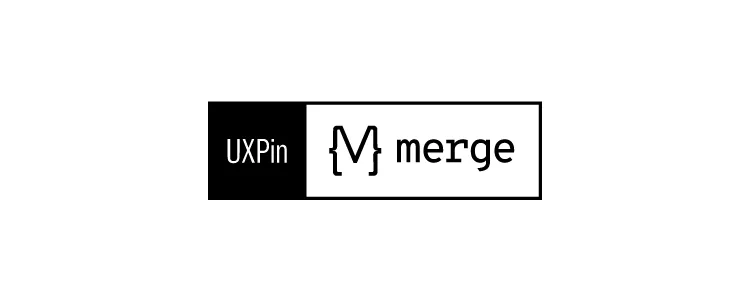
UXPin Merge solves this issue by importing a component library hosted in a repository into UXPin, so designers use the same UI elements during the design process as engineers use for front-end development–a true single source of truth!
Once you connect Merge to your repository, UXPin automates everything else. Any changes to the repo automatically sync to UXPin and notify design teams of the update. Merge’s Version Control lets designers switch versions and control when they want to update a project.
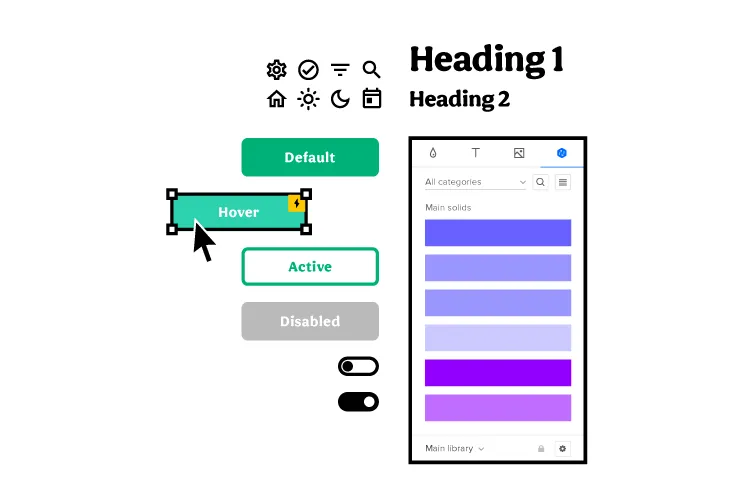
Merge is just one element of UXPin’s end-to-end design tool. Designers can use UXPin, like any other design tool, to create wireframes, mockups, and interactive prototypes. Designers can test web designs in the browser or use UXPin Mirror for mobile apps (iOS and Android).
UXPin’s Comments enable designers, product teams, engineers, and stakeholders to discuss design files and prototypes in real-time–even if they don’t have a UXPin account. Slack and Jira integrations keep everyone connected with design project updates.
There are three ways to use Merge:
- npm integration: import components from open-source libraries from the npm registry
- Git Integration: connect Merge directly to a React repository
- Storybook Integration: use any Storybook component library, including React, Angular, Vue, and other front-end technologies
This leads us to our next design collaboration tool…
Storybook

Storybook is a sandbox of sorts for developing UI elements in isolation. While engineering teams primarily use Storybook, the platform’s UI Review feature enables designers, product teams, and other stakeholders to test components and provide feedback before release.
Storybook is an essential tool for cross-functional design system teams, where designers and engineers work closely to build, update, and maintain components. Storybook’s Merge integration automates releases to design teams, so designers and engineers are always in sync.
Miro
Miro is a cloud-based collaborative ideation tool for whiteboarding and brainstorming ideas. Design teams use Miro for in-person and remote team collaboration, including workshops, design sprints, and collaborative prototyping.
Mural
Mural is an excellent Miro alternative, and both platforms offer comparable features and pricing–it comes down to which user interface you prefer.
Google Jamboard
Google Jamboard is perfect if you’re looking for a free whiteboarding tool. The downside of Jamboard is that you don’t have access to the templates available with Miro and Mural, so you’ll have to create everything from scratch.
Slack
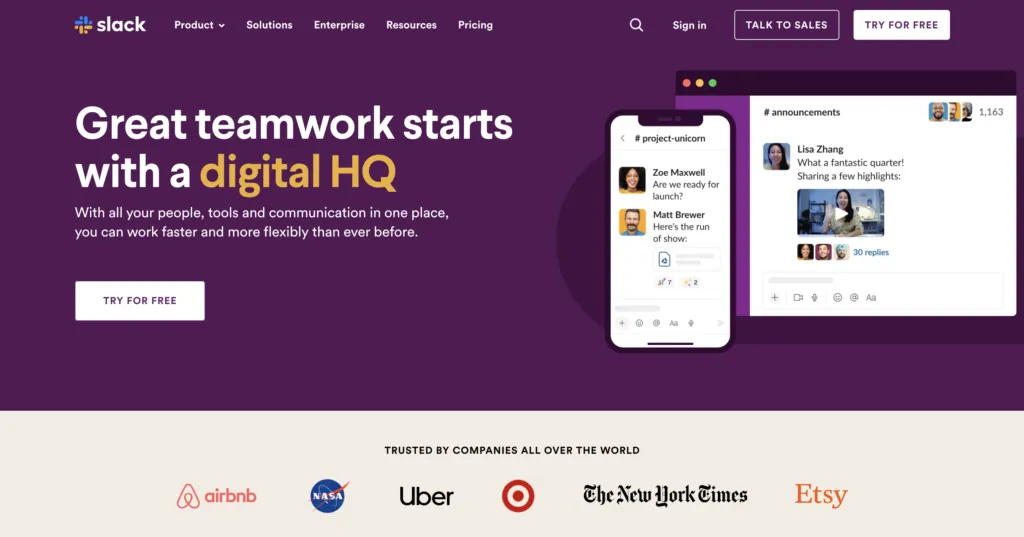
Slack has become the town hall for many organizations where teams can communicate, collaborate, share files, record videos (Loom alternative), and host calls.
Slack is a fantastic design collaboration tool because its extensive integration options mean teams can connect tools and platforms from other departments.
Google Chat & Spaces
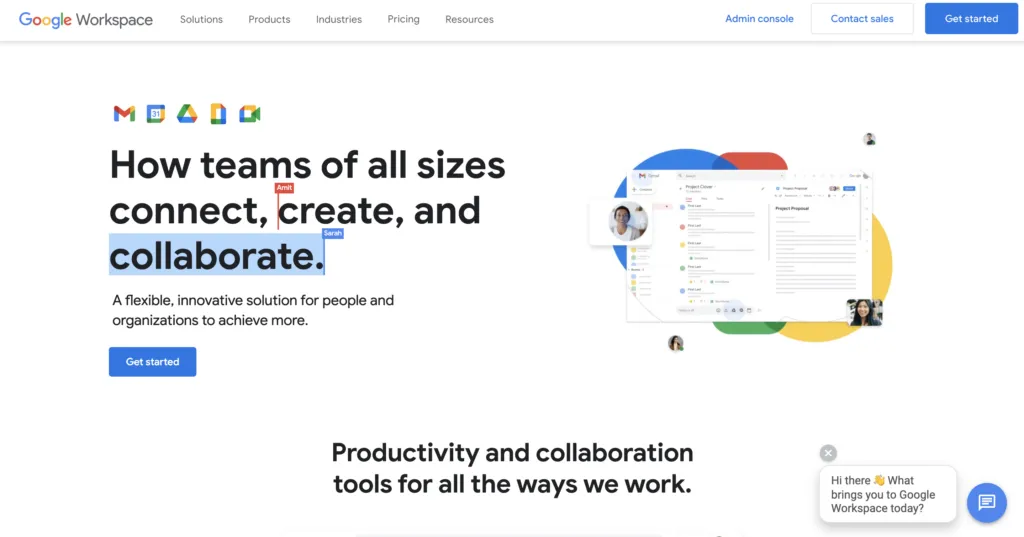
If your organization uses Google Workspace for email and cloud storage, it makes sense (and saves money) to use Google Chat & Spaces instead of paying extra for Slack and other messaging apps.
Google Spaces works similarly to Slack, where you can create different channels or connect directly with team members through Chat. Its seamless integration with the Google Workspace suite means product development teams keep collaborative efforts, including file sharing, calendars, spreadsheets, documents, presentations, etc., in one centralized platform.
Google Chat offers native integrations with many design tools and connects to Zapier to sync with other products and platforms.
Notion
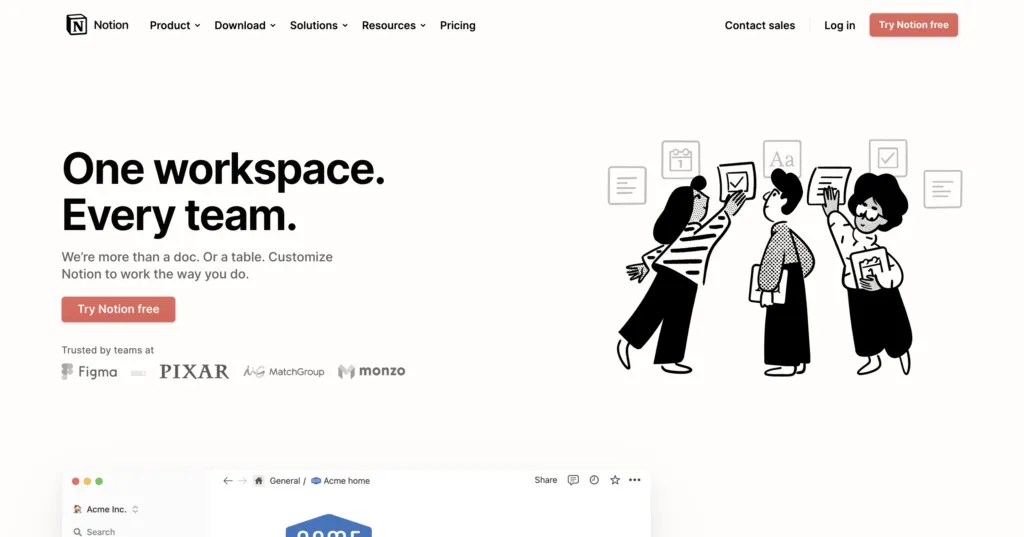
Notion’s minimalist UI, the vast range of templates, and versatility make it an excellent project management tool for product development teams. Teams can use Notion for product roadmaps, meeting notes, task management, wikis, documentation, and more.
Jira
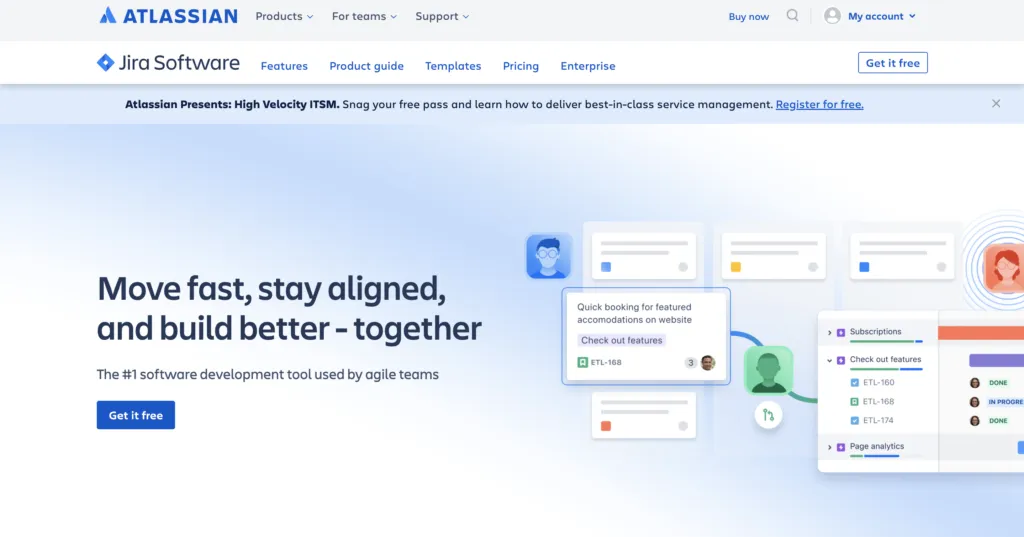
With its issue tracking and DevOps integrations, Jira is one of the most popular project management tools for software development. If your organization uses other Atlassian products, Jira is an obvious choice with many benefits and integrations.
Trello
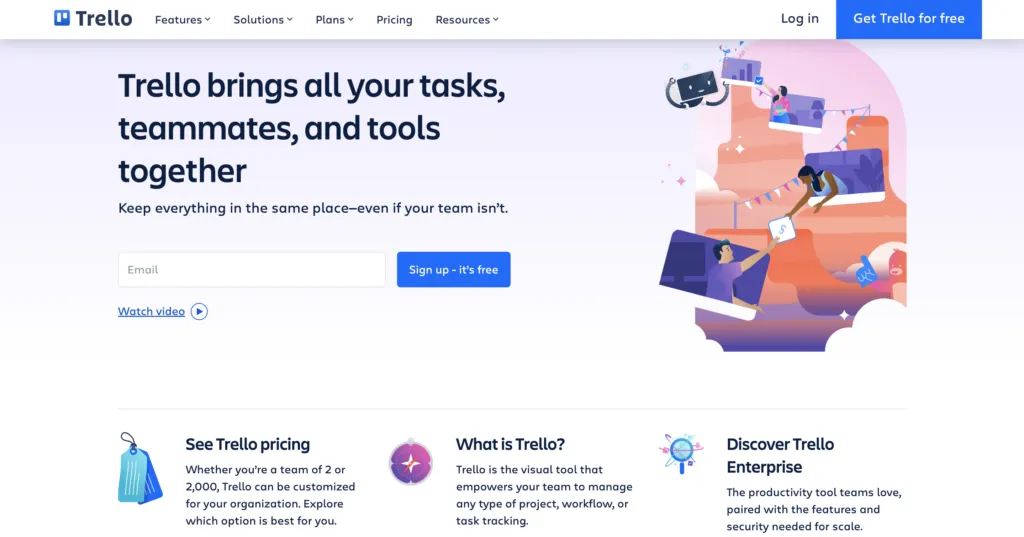
One of Jira’s native integrations is the popular design project management tool Trello–another Atlassian product. Trello’s many workspace features allow for brainstorming, meetings, task management, CRM (perfect for user testing participants), and calendar syncing at every stage of the design process.
Asana
Asana is a fantastic Trello alternative with similar features and many integrations to keep designers connected to the rest of the organization. Asana’s task automation and project tracking features help streamline design operations.
ProofHub
ProofHub is a comprehensive product management platform with features for every department, including design, engineering, and product teams.
Unlike other project management tools, which charge per user/seat, ProofHub works on a flat-rate model with unlimited users–great for cash-strapped startups and multi-national organizations with thousands of employees.
Improve Cross-Team Collaboration with Merge
Traditional product development workflows create silos because everyone is using different tools. Often these tools don’t sync, resulting in manual updates that cause errors and delays.
UXPin Merge brings UX teams, product teams, and engineers into a single product development workflow where everyone is connected via a single source of truth–a process PayPal’s Erica Rider refers to as DesignOps 2.0.
Merge creates a drag-and-drop design environment that makes prototyping accessible to more team members. For example, PayPal’s product teams (who had no previous design tool experience) build, test, and handoff all of the organization’s internal products. The lean UX team jumps in to assist with complex usability issues and provides user experience mentoring.
Merge’s ready-made components include properties and interactivity defined by the design system, so there’s no need to design from scratch, significantly reducing the design tool and prototyping learning curve.
Prototype quality is another significant Merge benefit. Because Merge prototypes use the same UI components as front-end engineers from the same repo, designers can build replicas indistinguishable from the final product.
These prototypes enhance usability testing but also result in meaningful feedback and collaboration from stakeholders.
“One of the significant impacts of UXPin Merge is our ability to create higher fidelity prototypes. There’s a lot more confidence from everyone (including designers, C-suite, directors, and developers) about what the final product will look like, the user experience, and interactivity—giving us higher quality feedback from stakeholders.” Erica Rider – UX Lead EPX @ PayPal
Enhance your design workflows and achieve higher-quality design project outcomes with the world’s most advanced collaborative design tool. Visit our Merge page for more details and how to request access.




